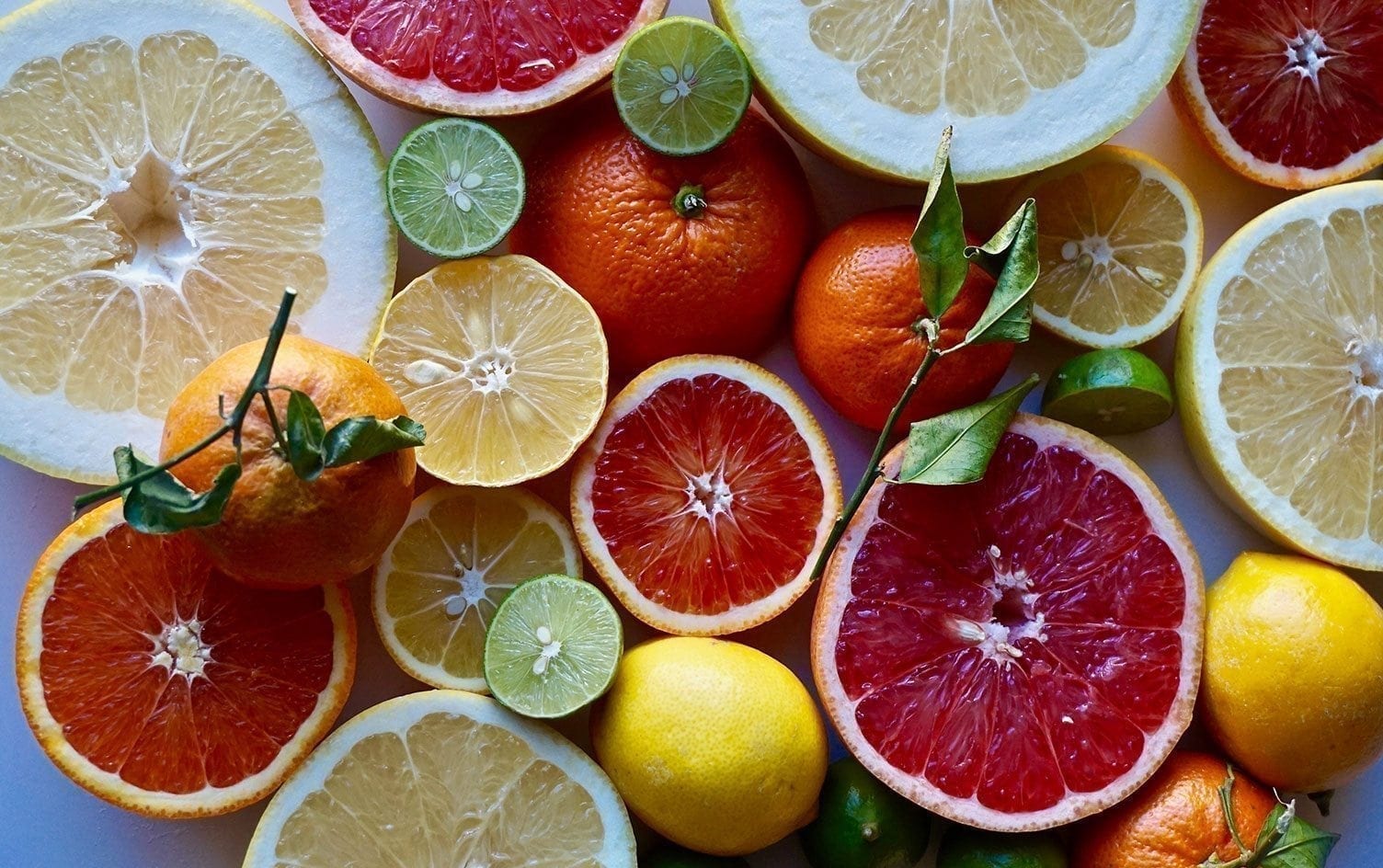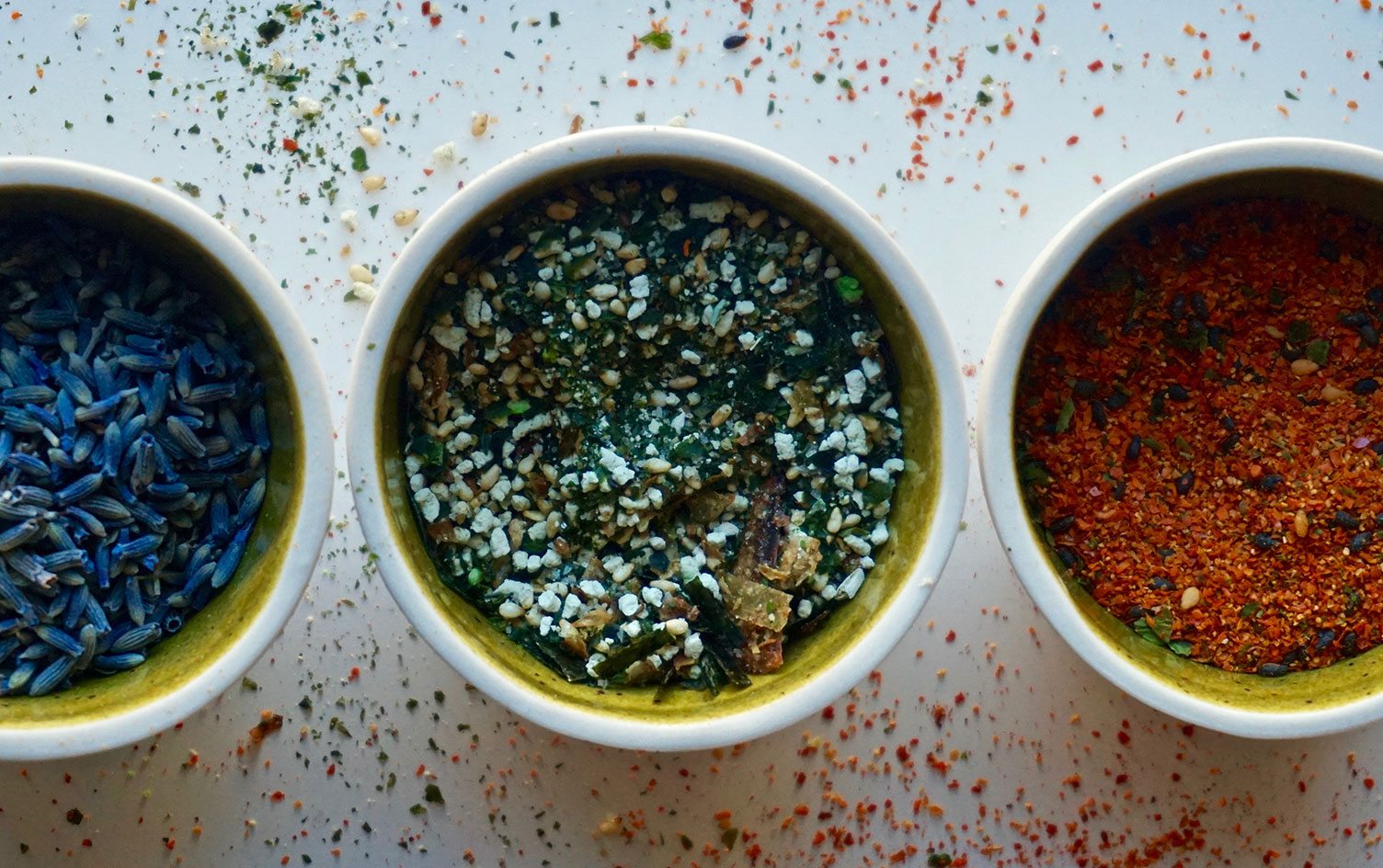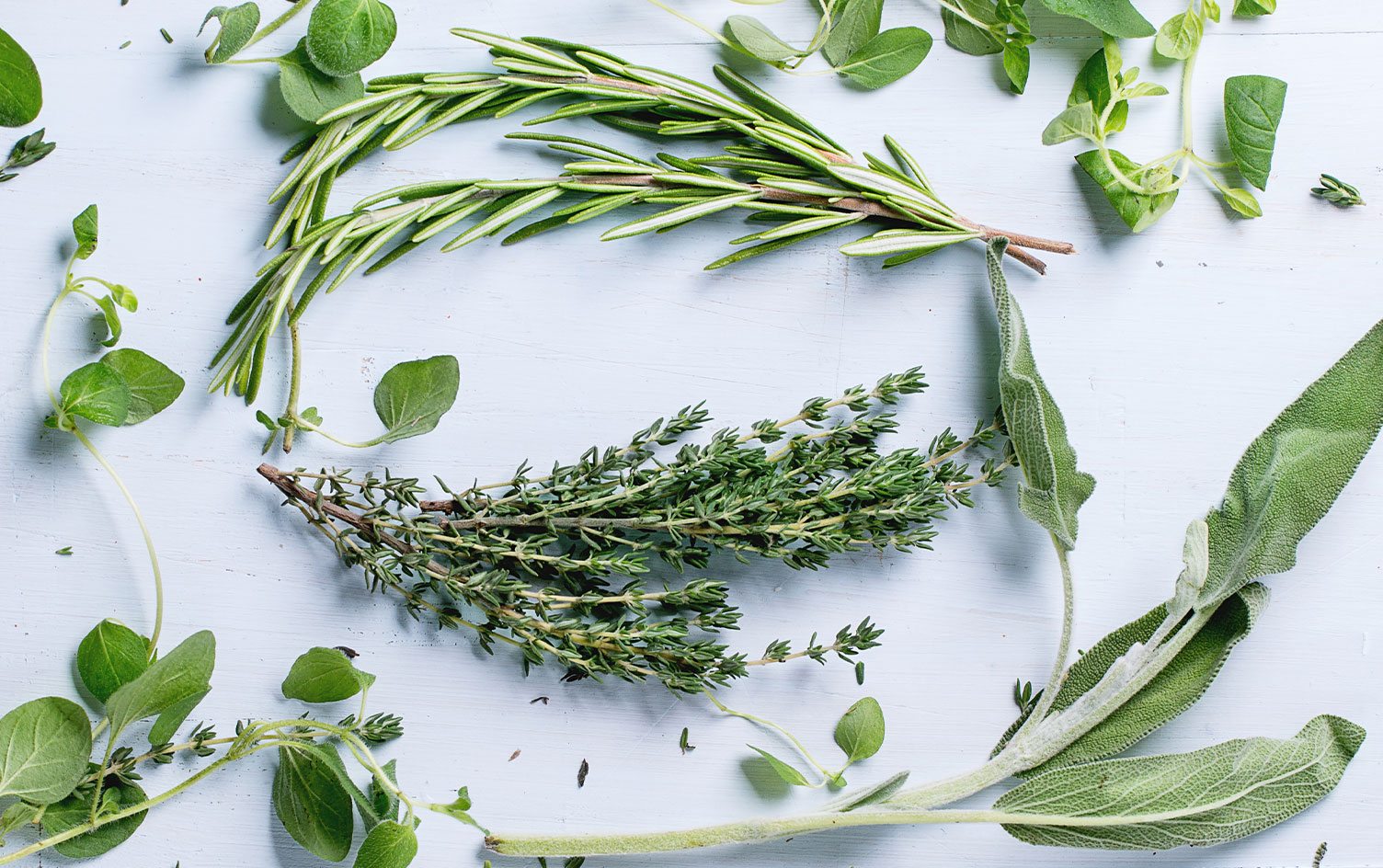Fine-tuning our eating habits and incorporating simpler, less-processed foods for a more balanced, less-calorically dense diet is a never-ending battle. While fresh fruits, vegetables, whole-grains and lean proteins are excellent for your body, they can require a little help to woo your taste buds.
Healthy habits are easier to form (and keep) when your healthy meals are delicious. Amplify the flavor of your meals with these five easy-to-find ingredients:
1. SALT
 Salt provides sodium, a nutrient our bodies need (in moderation) to maintain blood pressure, help our muscles and nerves function properly and to stay hydrated. Our meals need salt for several important purposes as well — salt opens our taste buds and allows us to savor flavors with more clarity. Salt also helps certain molecules in foods release into the air, increasing their aromas and enhancing our perception of taste. It balances salty and bitter tastes in our foods. There are a variety of salts to choose from, each with their own unique flavors. Use fine-grain salts like sea salt for seasoning foods while cooking, and reserve large-grain salts for finishing and sprinkling on just before serving. You can experiment with smoked salts and herbed salts, too.
Salt provides sodium, a nutrient our bodies need (in moderation) to maintain blood pressure, help our muscles and nerves function properly and to stay hydrated. Our meals need salt for several important purposes as well — salt opens our taste buds and allows us to savor flavors with more clarity. Salt also helps certain molecules in foods release into the air, increasing their aromas and enhancing our perception of taste. It balances salty and bitter tastes in our foods. There are a variety of salts to choose from, each with their own unique flavors. Use fine-grain salts like sea salt for seasoning foods while cooking, and reserve large-grain salts for finishing and sprinkling on just before serving. You can experiment with smoked salts and herbed salts, too.
Try sprinkling your oatmeal or breakfast toast with a pinch of large-grain sea salt, add fine-grain sea salt to water when cooking grains or pasta to impart flavor and sprinkle a few pinches of herbed salts over salads or protein entreés before serving to add a little flourish.
2. CITRUS
 In addition to being high in vitamin C — a powerful antioxidant — citrus’ bright, cheery flavors are undeniable and can go so much further than showering your dishes with spritzes of lemon juice.
In addition to being high in vitamin C — a powerful antioxidant — citrus’ bright, cheery flavors are undeniable and can go so much further than showering your dishes with spritzes of lemon juice.
Try using slices of whole fruit on baked fish or when roasting chicken. Poke out the seeds and roast whole lemons, oranges, grapefruits and limes, then use their segments to add a mellow, sweet flavor to any dish. Mix and match citrus juices and add to homemade salad dressings, squeeze over salads or even meat to add bright acid. Sprinkle the zest of fresh fruits over oatmeal, ice cream or your favorite yogurt parfait.
3. SPICE BLENDS
 Spices are dried seeds, roots and bark. There are hundreds of varieties and even more ways spices can be combined in pleasant blends to pack flavor. Spice blends help create specific, often regional, flavor profiles and are an easy way to experiment and explore the world’s’ flavors in your own kitchen. Harissa, za’atar, togarashi, furikake and Chinese five spice are all easy to find in well-stocked grocery stores or ethnic markets.
Spices are dried seeds, roots and bark. There are hundreds of varieties and even more ways spices can be combined in pleasant blends to pack flavor. Spice blends help create specific, often regional, flavor profiles and are an easy way to experiment and explore the world’s’ flavors in your own kitchen. Harissa, za’atar, togarashi, furikake and Chinese five spice are all easy to find in well-stocked grocery stores or ethnic markets.
Try sprinkling furikake, a Japanese sesame and seaweed spice blend over eggs, rice bowls and in noodle soups for an extra savory kick. Roast carrots with a sprinkling of Middle Eastern harissa and a drizzle of olive oil and maple syrup for smoky, deep flavors. Mix spicy Japanese togarashi into hummus or smashed avocados with lime for an unexpected, spicy topping for crackers. Sprinkle Mediterranean za’atar over roasted chicken or vegetables for an earthy flourish, and choose Chinese five spice in lieu of allspice when baking or dressing up oatmeal and porridge.
4. CHILIES
 There are several theories that adding the heat of chilies to your foods has certain health benefits, but we suggest adding a little extra fire simply because it adds unexpected flavor to otherwise flat dishes. Don’t forget to de-seed fresh chilies before adding and do a little research before you buy fresh or dried chilies — some pack more of a fiery punch than others.
There are several theories that adding the heat of chilies to your foods has certain health benefits, but we suggest adding a little extra fire simply because it adds unexpected flavor to otherwise flat dishes. Don’t forget to de-seed fresh chilies before adding and do a little research before you buy fresh or dried chilies — some pack more of a fiery punch than others.
Try slicing fresh chilies and mashing them up with a couple of cloves of garlic, toss into a glass jar and add vinegar or olive oil, then drizzle over salads or entreés. Throw a couple of chilies into a food processor with equal parts garlic and ginger, and whir. Use a spoonful to season soups, stir frys or marinades.
READ MORE > WHY ATHLETES NEED SALT AND SUGAR
5. FRESH HERBS
 Handfuls of fresh, vibrant herbs can do wonders for all of your dishes. Mint, basil, thyme, oregano, dill — the sky’s the limit. Find a few fresh options you love and experiment with showering handfuls all over salads, roasted meats, bowls of grains and even plates of fresh fruit.
Handfuls of fresh, vibrant herbs can do wonders for all of your dishes. Mint, basil, thyme, oregano, dill — the sky’s the limit. Find a few fresh options you love and experiment with showering handfuls all over salads, roasted meats, bowls of grains and even plates of fresh fruit.
Try adding big handfuls of your favorite herbs to fresh, bright salads. Slowly warm olive oil and toss in a handful of fresh herbs, then strain out the herbs for infused olive oil. Kept in the refrigerator, it’s perfect drizzled over salads, pasta or grains.



